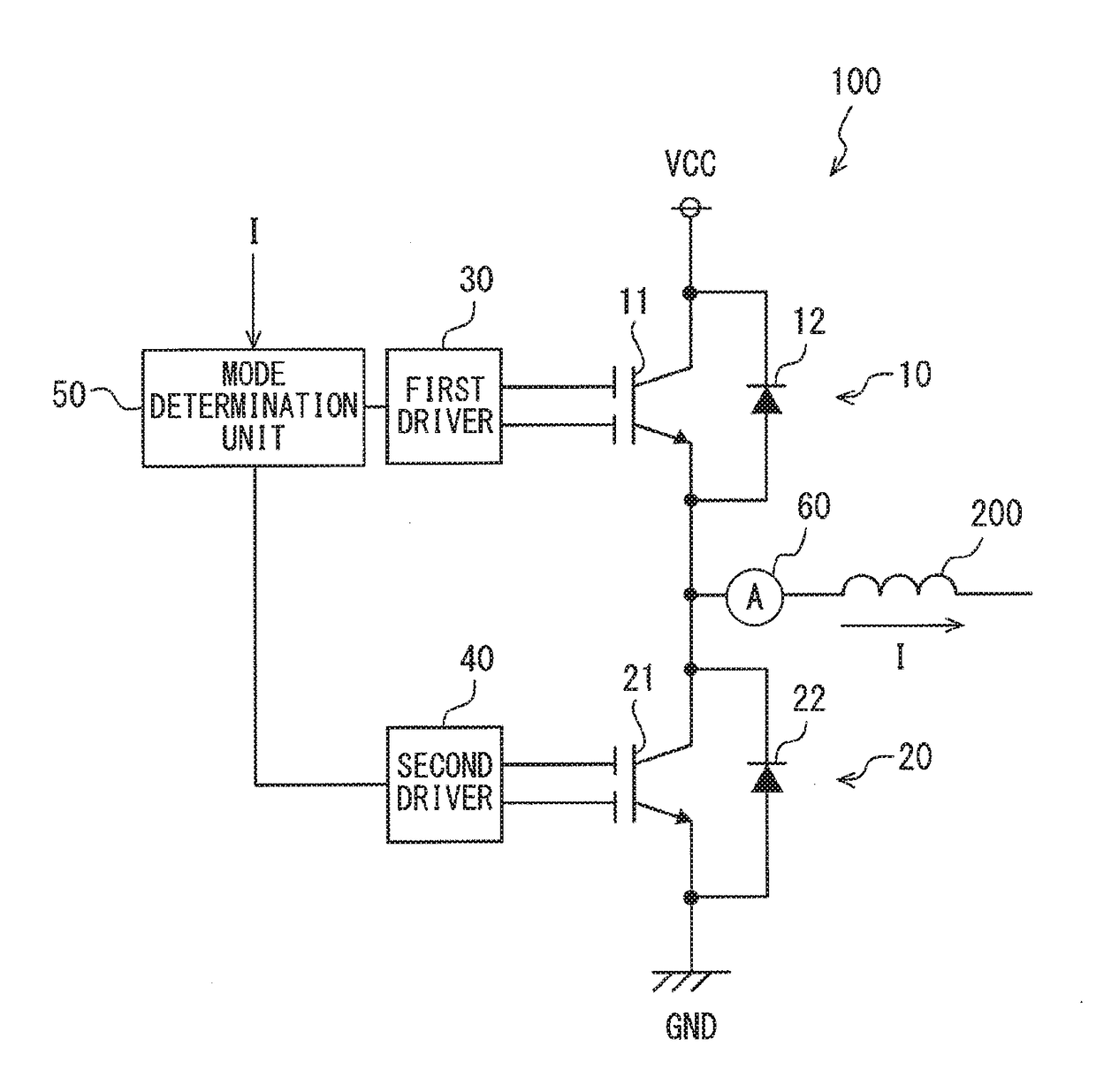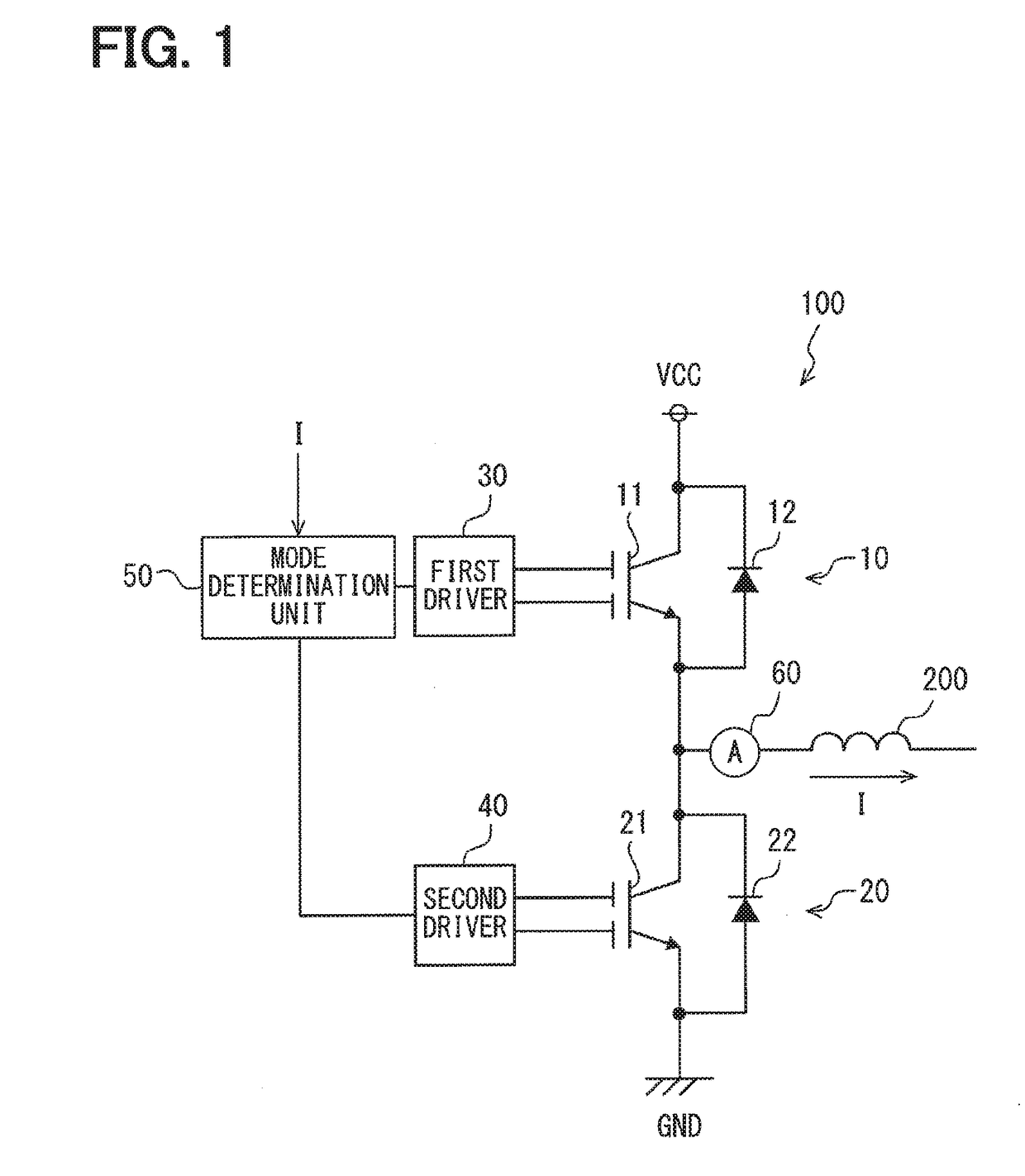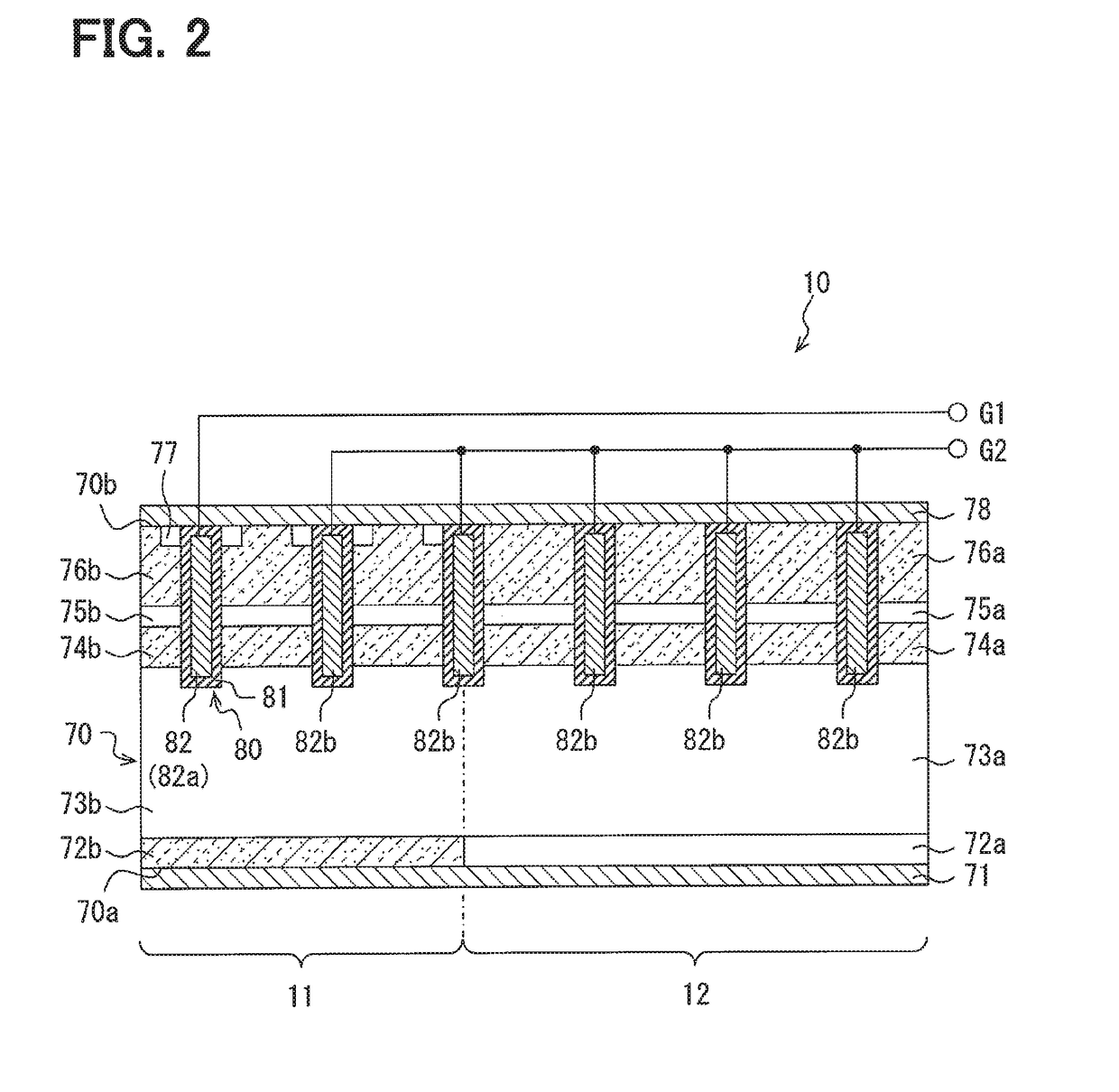Semiconductor device
a technology of semiconductor devices and diodes, which is applied in the direction of semiconductor devices, solid-state devices, transistors, etc., can solve the problems of inability to accurately determine the polarity of output current, the risk of forward voltage increasing in the diode device region, and the inability to fix voltage in a configuration, so as to reduce forward voltage and forward voltage. , the effect of reducing losses
- Summary
- Abstract
- Description
- Claims
- Application Information
AI Technical Summary
Benefits of technology
Problems solved by technology
Method used
Image
Examples
first embodiment
[0023]First, the schematic configuration of a semiconductor device according to the present embodiment will be described with reference to FIG. 1.
[0024]In the present embodiment, a reverse conducting insulated-gate bipolar transistor (RC-IGBT), having a diode device and an insulated-gate bipolar transistor (IGBT) device on the same semiconductor substrate, will be described.
[0025]The RC-IGBT is applied to an inverter, which is a semiconductor device.
[0026]As shown in FIG. 1, the inverter 100 includes two reverse conducting insulated-gate bipolar transistors 10 and 20, drivers 30 and 40 for applying gate voltage to gate electrodes of the reverse conducting insulated-gate bipolar transistors 10 and 20, respectively, and a mode determination unit 50 that determines the driving state of each of the reverse conducting insulated-gate bipolar transistors 10 and 20.
[0027]As shown in FIG. 1, the inverter 100 is configured to have the two reverse conducting insulated-gate bipolar transistors ...
second embodiment
[0082]In addition to the reverse conducting insulated-gate bipolar transistors that are the first device 10 and second device 20 described in the first embodiment, there is preferably also pillar regions 79 having n-type conductivities as shown in FIG. 8. The pillar regions 79 are formed so as to extend from the second main surface 70b of the semiconductor substrate 70 in the thickness direction, through the anode region 76a or body region 76b, and to reach the first barrier region 75a and second barrier region 75b. The pillar regions 79 are a diffusion layer where impurities of the same conduction type as that of the first and second barrier regions 75a and 75b are doped. Thus the pillar regions 79 and barrier regions 75a and 75b have substantially the same potential.
[0083]With the pillar regions 79 provided, when forward bias is applied across the anode electrode 78 and the cathode electrode 71, the anode electrode 78 is short-circuited to the pillar regions 79 via the metal-semic...
third embodiment
[0087]The thinned-out structure mentioned in the description of the planar layout with reference to FIG. 3 in the first embodiment will be described more specifically in the present embodiment. The present embodiment adopts the aspect with pillar regions 79 described in the second embodiment. As shown in FIG. 9, the gate electrodes 82 adjacent each other are not short-circuited to the anode electrodes 78 in the diode device 12. In other words, gate electrodes 82 adjacent the gate electrodes 82 short-circuited to the anode electrodes 78 are assigned as the second gate electrodes 82b. The first barrier regions 75a formed in the diode device 12 are in contact with at least one second gate electrode 82b via the insulating film 81, so that the diode device 12 can provide the effect of reducing the forward voltage VF by application of the negative voltage −V2 to the second gate electrodes 82b. Also, the effect of reducing the gate capacitance by the thinned-out structure can be achieved.
[...
PUM
 Login to View More
Login to View More Abstract
Description
Claims
Application Information
 Login to View More
Login to View More - R&D
- Intellectual Property
- Life Sciences
- Materials
- Tech Scout
- Unparalleled Data Quality
- Higher Quality Content
- 60% Fewer Hallucinations
Browse by: Latest US Patents, China's latest patents, Technical Efficacy Thesaurus, Application Domain, Technology Topic, Popular Technical Reports.
© 2025 PatSnap. All rights reserved.Legal|Privacy policy|Modern Slavery Act Transparency Statement|Sitemap|About US| Contact US: help@patsnap.com



